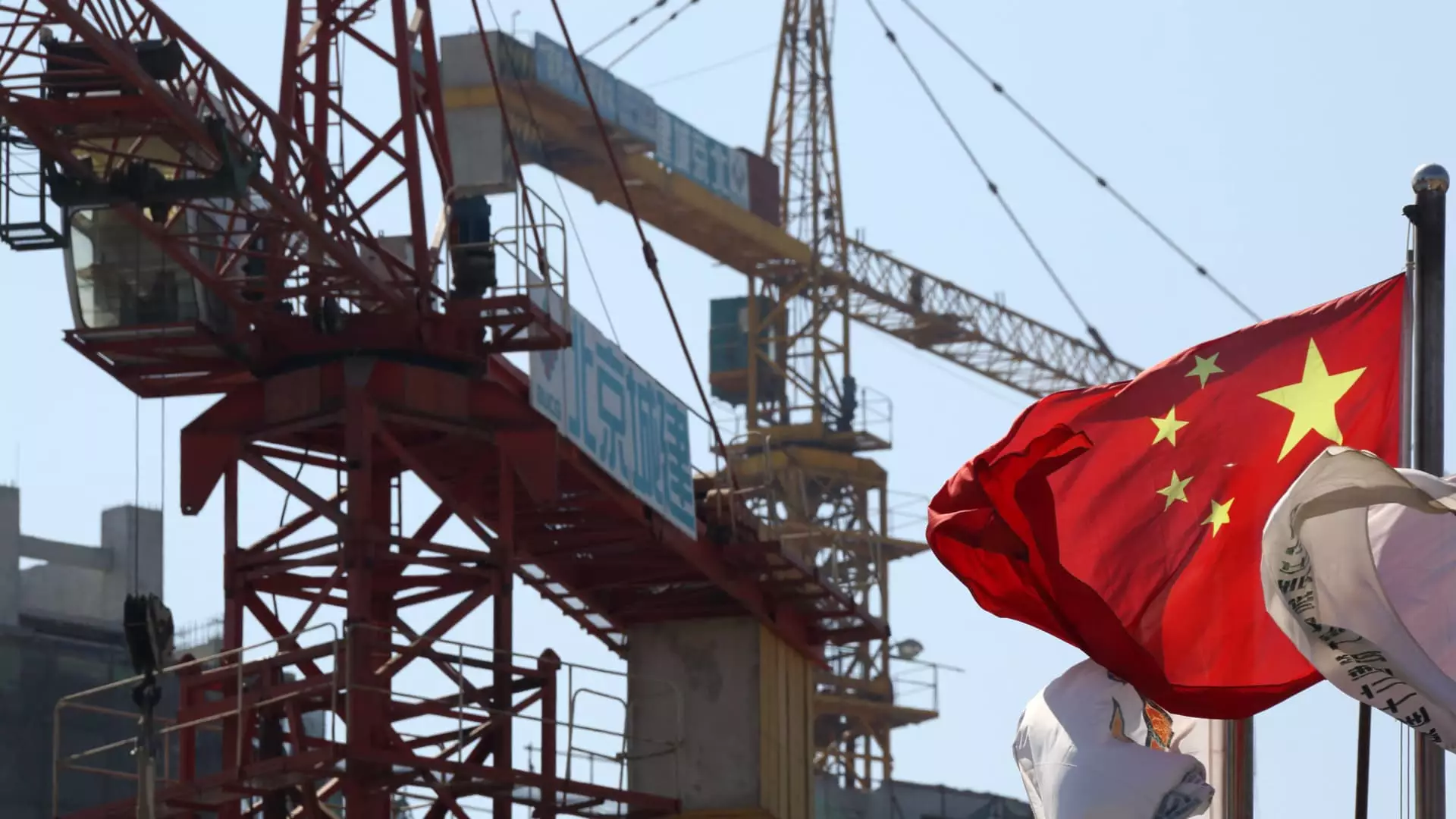As China navigates the complexities of its economic landscape, forecasters are signaling a further decline in its growth rate by 2025, despite a temporary uplift from recent government stimulus initiatives. According to the World Bank, the projection for China’s growth in 2025 has settled at 4.3%, a drop from the anticipated 4.8% for 2024. This downturn is indicative of deeper challenges within the Chinese economy, highlighting a precarious balance between short-term gains from fiscal measures and long-term structural weaknesses.
The World Bank’s economic update, which was released on a recent Tuesday, reflects a nuanced understanding of the current economic environment. Initially, the stimulus measures introduced by Beijing seemed to invigorate investor confidence, contributing to a fleeting rally in the stock market. However, these measures, primarily centered around monetary policy rather than comprehensive reforms, have not fundamentally addressed the underlying issues plaguing consumer behavior and spending.
One of the main obstacles hindering economic recovery in China is the significant decline in consumer spending. Aaditya Mattoo, the World Bank’s East Asia and Pacific chief economist, pointedly identified the “fiscal dimension” of the stimulus as lacking clarity, which poses challenges for future growth predictions. Concerns about stagnant wages, dwindling property values, and an overall sense of job insecurity are pervasive among consumers. These emotional and economic apprehensions pose a formidable barrier to a robust recovery in consumer expenditure.
As per insights shared by analysts, including James Sullivan from JPMorgan, there is a critical yet unanswered question regarding whether the stimulus initiatives will lead to a trickle-down effect that stimulates consumer demand or merely bolster supply-side conditions. The current paradigm suggests skepticism about the ability of these measures to effectively translate into increased consumer expenditure, thereby exacerbating the economic stagnation.
In addition to domestic dilemmas, the Chinese economy is contending with external pressures driven by rising geopolitical tensions. These tensions extend beyond mere trade disputes, influencing consumer sentiment and investor confidence within the region. Concurrently, demographic challenges loom larger as China grapples with an aging population, which presents long-term concerns for workforce sustainability and productivity.
Amidst these multifaceted challenges, the World Bank emphasizes the necessity for more profound structural reforms. The lack of competitive dynamism, inadequate infrastructure, and outdated educational systems represent hurdles that cannot be overcome solely by monetary policy adjustments. Mattoo’s commentary underscores the reality that stimulus measures may offer temporary reprieve, but they are insufficient substitutes for holistic reforms needed to catalyze lasting economic growth.
Future Outlook: Regional Implications
The implications of China’s economic trajectory are not confined within its borders; they reverberate throughout the East Asia and Pacific regions that remain heavily reliant on China’s economic stability. The World Bank projects a growth rate of 4.7% for the rest of the region this year, which is expected to increase to 4.9% by next year, buoyed by anticipated recovery in exports and improved financial conditions. However, as China’s growth slows, neighboring economies face the pressing imperative to cultivate independent drivers of growth to sustain their own progress.
As state officials assert their commitment to bolstering the economy, including expediting special purpose bond issuance, optimism remains tempered. Without the announcement of formidable new stimulus packages, the underlying issues that threaten to impede growth remain unaddressed. Financial analysts continue to scrutinize the effectiveness of these measures, emphasizing a shift from mere economic band-aids to durable solutions that could truly invigorate both consumer confidence and market stability.
In summation, while temporary stimulus measures have injected a momentary uplift to China’s economy, the long-term outlook is fraught with challenges that require comprehensive reforms. The interconnected nature of global economies suggests that China’s economic health is a bellwether for regional stability. Therefore, it is imperative that economic strategies evolve from reactive adjustments to proactive, enduring change that addresses structural issues head-on. With a collective commitment to reform, China and its neighbors can aspire to navigate the stormy waters of economic uncertainty and emerge stronger in the future.


Leave a Reply